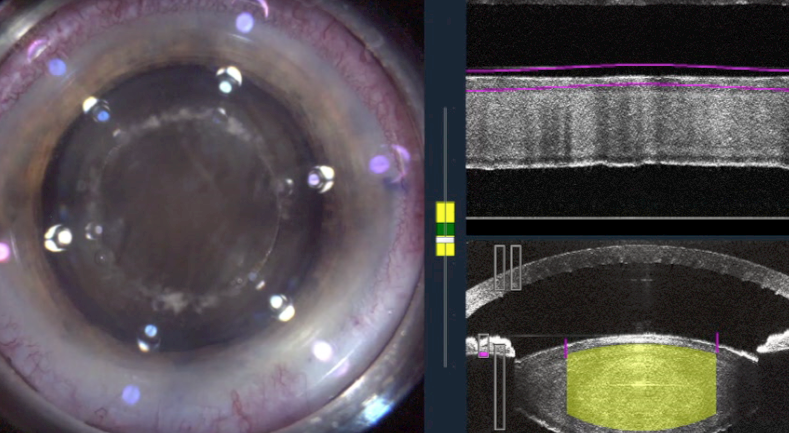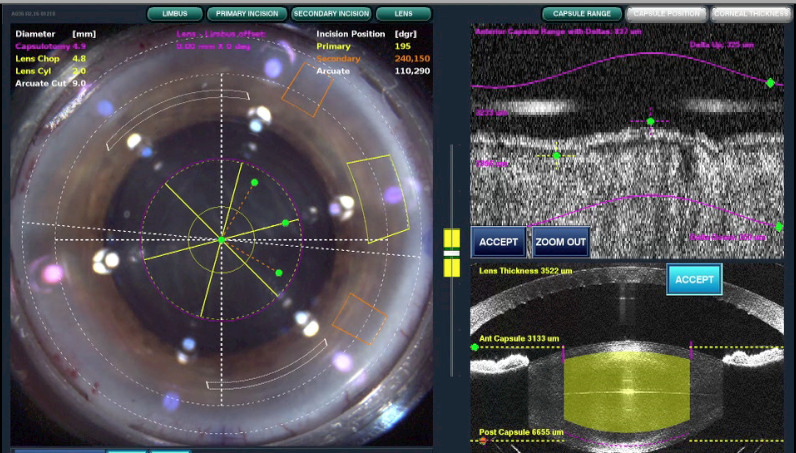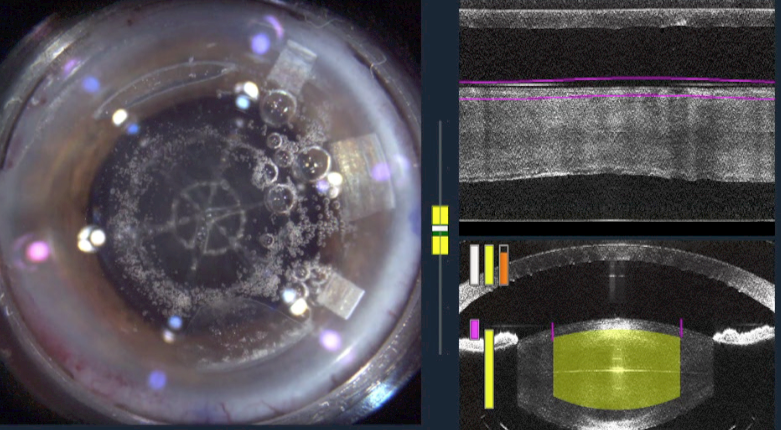Managing problems with Radial Keratotomy
What is RK?
Vertical deep incisions are made into the cornea in a spoke like fashion. Each incision causes the cornea to bulge around the incision and at the same time flattening the center of the cornea. Therefore the power of the cornea decreases and myopia or nearsightedness can be treated. This technique was invented by the Russians and was popular in our country in from 1980 to 1995. Today it is no longer performed.
There are some unique problems associated with Radial Keratotomy. The incisions decrease the tensile strength of the cornea. It’s shape and therefore the power become more responsive to the pressure within the eye. There is diurnal fluctuation of the pressure of the eye in normal people. It is usually highest in early morning and decreases during the rest of the day and night. As a consequence the cornea which has been weakened by RK is more curved in the morning and less so in the evening. The power is more in the early hours of waking and decreases over the next few hours. Therefore the vision for reading may be better in the morning but the distance vision improves during the day. The cornea bellows like the sail of a boat.
As the PERK or Prospective Evaluation of Radial Keratotomy study had found that the cornea continues to become weaker and flatter over the years after RK. The eye therefore continues to move from nearsightedness to farsightedness. The amount of diurnal fluctuation and progression towards hyperopia is proportional to the number of incisions made on the cornea and the thickness of cornea. Consequently the cornea, which has suffered 16 incisions, would be worse off than that which underwent only 4. Believe it or not some crazy barber surgeons made 32 or even more incisions on cornea. These corneas end up becoming weak and irregular in shape.
If we have to be successful with Prelex in such patients we have stabilize the fluctuations in vision and the drift towards progressive hyperopia. This can simply be achieved by aiming to make the eye a little nearsighted and let it progressively improve with passage of times. One eye may be made more nearsighted so as to achieve immediate functionality. The eye which is made which is aimed more towards zero can be made more spherical in future by laser.
There are many techniques available to decrease the fluctuation of post RK cornea. The incisions can be freshened and sutured. The gaps may also be filled with biological glue to increase the adhesion. A newer technique of crosslinking uses riboflavin activated by UV radiation to stiffen the cornea. This is being performed at certain centers only, which have access to this cutting edge technology.
In weak corneas a mechanical support may be given with intac ring segment.
One or a combination of these techniques may be utilized to achieve the desired result. These procedures can be used in conjugation with pi in eye.
In the worst case scenario a cornea transplant may be required.
What is AK?
Astigmatic Keratectomy is a transverse incision made in the mid- periphery of cornea to treat astigmatism. The incision is made in the steeper axis to relax the fibers and change the shape from oval to spherical.
What is LRI?
Limbal Relaxing Incisions- when AK is performed along the cornea margin. These incisions are longer and more stable; less effective but there are fewer side effects.
What is mini–RK?
Mini RK is used to treat eyes with minimal myopia with vertical incisions avoiding the central zone of the eye. Today it is used to treat
around one diopter of nearsightedness in patients who are not candidates for Lasik.


